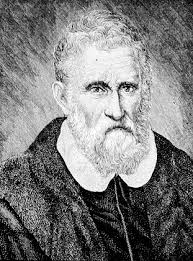Pierredor Pitmiy
Pierredor Pitmiy | |
|---|---|
 Pierredor in 1320 | |
| Born | January 14, 1256 |
| Died | September 5, 1328 |
| Nationality | Kakish |
| Occupation | Merchant |
| Known for | Opening a wider trade network extending from Kakland to Senefpat |
Notable work | My Travels of the World |
| Spouse(s) | Izabelas Pitmiy (m. 1297-1328) |
| Children | Ale Ofbisco Thenao Pitmiy |
| Parent(s) | Rosgua Gemaga Pitmiy (father) Patia Pitmiy (mother) |
Life
Early Life
Travels in Thrismari and Thuadia
Later Years
Death
My Travels of the World
Kakland
Ahia
After traveling through Juxland and the Kingdom of Kysxka, Pitmiy sailed to Ahia for the next part of his journey. He arrived to the city of Dura in March of 1275. Not much else was recorded during his time in Ahia as he had previously visited with his father. He would visit the cities of Vetter and Kilisa before sailing to Khirmania.
Khirmania
Pitmiy arrived in Khirmania in August of 1275 after a five month journey by boat from Ahia, arriving in the city of Baluang. Once arriving, he wrote in his journal:
Upon arrival to the lands of Khirmani peoples, I discover that it is a culture built around farming settlements, an agriculture society. I saw this throughout my journey in Khirmania.
After leaving Baluang, Pitmiy went to the cities of Khajalaya and Mukarda, finally leaving to the city of Isang, staying for five days. He left for Salamat in September.
Salamat
After leaving Isang, Pitmiy went west into what is now Salamat, to the city of Dar Al Janub, staying for three nights. Then after taking a day's journey to the Arabic Caliphate's capital Hayyum, where he met the Caliphate. From there he described in his journal:
After I met with the Caliphate, I wondered around the city of Hayyum. As I look around at the city markets, I see men wearing long gowns of single color, and the women wearing colorful dress. In the stalls they contain an assortment of foodstuffs, tools, and fabrics, locally made and some from foreign nations.
Pitmiy noted that the locals were less kind to him, referring to the Salamat Crusades decades prior. He left the city the same day, heading to the city of Ghafun. There he stayed the night, traveling northwest to Yryel.
Yryel
After traveling south from Salamat, Pitmiy went north through Yryel and across the Madak Straight to northern Yryel, to the far city of Ramah, arriving in January of 1276. From his week stay he observed the culture of the Yryeli. He noted the peoples of Yryel spoke Arabic and a foreign language that he hadn't heard before, describing Hewbrew, quoted saying "...they wrote with a strange script, not like the Arabic written in texts during my time in the Arabic Caliphate." His stay was extended when he contracted a cold, where he noted the use of medicine not seen in Kakland. He promptly left to Sa'Androreva afterwards.
Sa'Androreva
Prei Meas
After his year stay in Sa'Androreva, Pitmiy traveled north to Prei Meas in 1278. There he meet the Ste ch, Banbamphlu III, in Tikrongmeas. He describes the palace as "the royal palace is not just one palace but a large compound of various intricately built smaller palaces coated with gold exteriors and very well maintained gardens between...". During his time he observed the customs of the court in his journal:
..."the Ste ch would wear incredibly intricate robes with beautiful floral patterns and nobody but the ruler may dress in an all-over floral design. The Ste ch would wear 3 pounds of pearls around his necks and 2 gold bracelets set with cat's eyes. and when outside of the palace carries a golden sword in his hand as a badge of office. Nobody but the Ste ch and the royal guard may have weapons in the court or in the presence of his majesty. In court the ste ch sits at the end of a great hall on a throne made of gold and emblazed with cat's eyes with the concubines and wives of the monarch sitting to his sides wearing simple silk dresses in 2 pieces one around the waist and going down to the knees and a second one emblazoned with simple floral patterns not as intricate as the ruler's around the shoulders draped over. The concubines and wives would typically wear necklaces gifted to them by the ruler himself while in court and wear their hair in fine knots above their head with flowers. In the Kammist tradition anyone may petition the ruler during times when the ruler holds court both men and women. He or she who is in the presence of the ruler may never meet his gaze and may not walk or wear shoes in the rulers presence, One is expected to bow before the ruler before speaking in petition. Councilors of the ruler's court and his other relatives stand at opposing sides of an empty aisle left for petitioners leading from the entrance of the hall to the throne and are expected to advise his majesty upon request or after hearing a petition. The clothes of members of the court are highly dependent on one's status and position and have traditional meanings which those who regular attend court know by heart. The councilors wear fine dress of cloth with the royal seal emblazoned on their chest with the color of the dress determined by position."
He would stay in Prei Meas for six months before leaving for [TBA] in June.